If you love to cook pork ribs, but have struggled to get them perfectly cooked, you’re not alone. Many people find it challenging to achieve the ideal balance of tenderness and flavor, without ending up with dry or undercooked meat. In this article, we’ve got you covered with the ultimate solution to your pork rib woes: a comprehensive temperature chart that will guide you on how to cook your ribs perfectly every time. Whether you’re a beginner or an experienced cook, you’ll learn about the different cooking methods, the ideal temperature for each method, and the cooking time required for different cuts of ribs. So, get ready to impress your friends and family with the best pork ribs they’ve ever tasted!
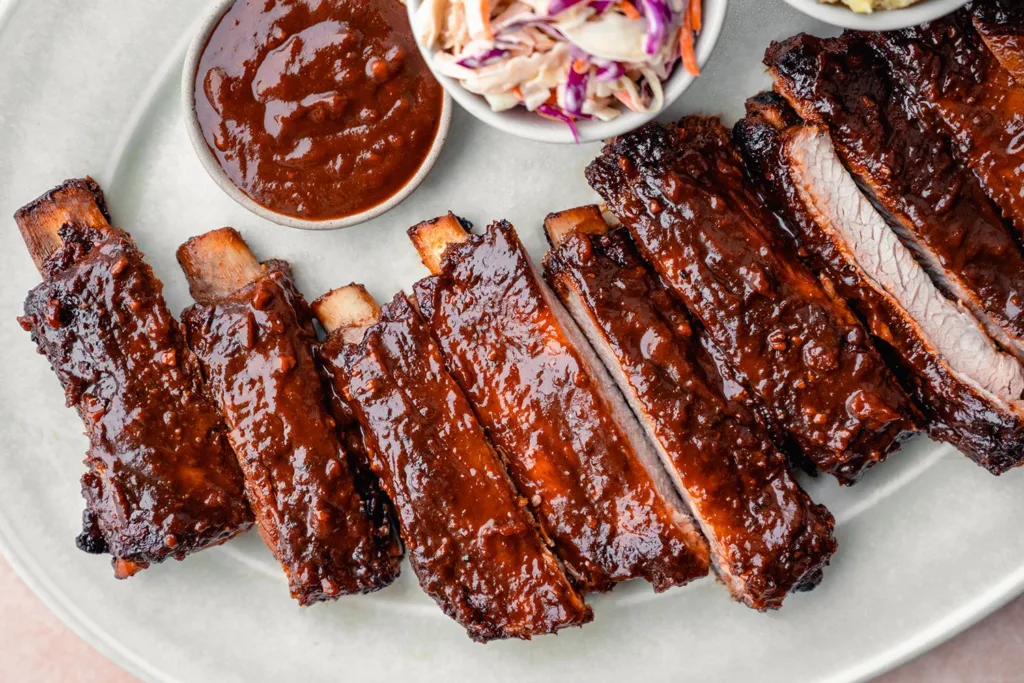
Table of Contents
Have you understood the pork ribs temperature chart?
A Pork Ribs Temperature Chart is a guide that provides a range of internal temperatures for different levels of doneness in pork ribs. The temperature chart typically ranges from 145°F to 195°F (63°C to 91°C), with different temperature ranges indicating different levels of doneness.
Here is a breakdown of what the different temperature ranges on a Pork Ribs Temperature Chart typically indicate:
- 145°F to 160°F (63°C to 71°C): This is the minimum safe temperature for cooked pork, according to the USDA. Ribs cooked to this temperature will be slightly pink in the center, juicy, and tender. This level of doneness is suitable for those who prefer their pork ribs to be slightly undercooked.
- 160°F to 170°F (71°C to 77°C): Ribs cooked to this temperature will be fully cooked, with no pink color in the center. They will be slightly firmer and dryer than ribs cooked at lower temperatures. This level of doneness is preferred by many who like their pork ribs to be fully cooked, but still juicy and tender.
- 170°F to 180°F (77°C to 82°C): Ribs cooked to this temperature will be very firm, dry, and may even be tough. This level of doneness is generally not recommended for pork ribs, as it can result in overcooked and tough meat.
- 180°F to 195°F (82°C to 91°C): Ribs cooked to this temperature will be falling off the bone and very tender. They will also be very dry, as most of the fat and juices will have been rendered out of the meat. This level of doneness is ideal for those who prefer their pork ribs to be fully cooked and falling off the bone.
How to use the pork ribs temperature chart to measure the internal temperature of the ribs accurately
To measure the internal temperature of your pork ribs accurately, you need to use a pork ribs temperature chart. This will guide you on the ideal temperature range for your desired level of doneness, ensuring that your ribs come out perfectly cooked every time.
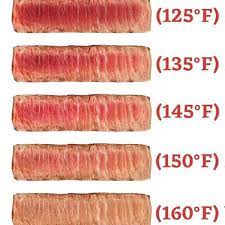
- To begin, insert the thermometer probe into the thickest part of the meat, making sure that it does not touch the bone. This will give you an accurate reading of the meat’s internal temperature. Wait for a few seconds until the thermometer reading stabilizes.
- Next, check the temperature on the thermometer and compare it with the pork ribs temperature chart. The temperature chart will provide you with a range of internal temperatures for different levels of doneness. For example, for a medium-rare pork rib, the internal temperature should be between 145°F and 150°F.
- If the temperature reading falls within the range specified for the desired level of doneness, the ribs are done. If the temperature is too low, continue cooking the ribs until the desired temperature is reached. If the temperature is too high, the ribs may be overcooked, resulting in dry and tough meat.
- Once the desired temperature is reached, remove the ribs from the heat source and let them rest for a few minutes before serving. This will allow the juices to redistribute, resulting in more tender and flavorful meat.
- It’s essential to use a meat thermometer to ensure that the internal temperature of the ribs reaches a safe level. This will help to avoid any potential health risks associated with undercooked meat. By using a pork ribs temperature chart, you can be confident that your pork ribs will be perfectly cooked every time.
Understanding the Pork Ribs Temperature Chart is important to ensure that you cook your pork ribs to your desired level of doneness. Remember to use a meat thermometer to ensure that the internal temperature of the pork ribs is within the recommended range. With practice, you can achieve the perfect level of doneness and serve delicious, juicy, and tender pork ribs.
Some common mistakes to avoid when using a pork ribs temperature chart
If you want to impress your guests with perfectly cooked pork ribs, using a temperature chart is an essential tool. However, keep in mind that there are a few common mistakes to avoid in achieving the best results.
Not using a meat thermometer
One of the biggest mistakes that people make when cooking ribs is relying on visual cues to determine if the meat is cooked. This can be risky because it’s not always easy to tell if the meat is cooked just by looking at it. It’s essential to use a meat thermometer to ensure that the ribs are cooked to the proper temperature. A meat thermometer will provide an accurate reading of the internal temperature of the meat, ensuring that it’s safe to eat.
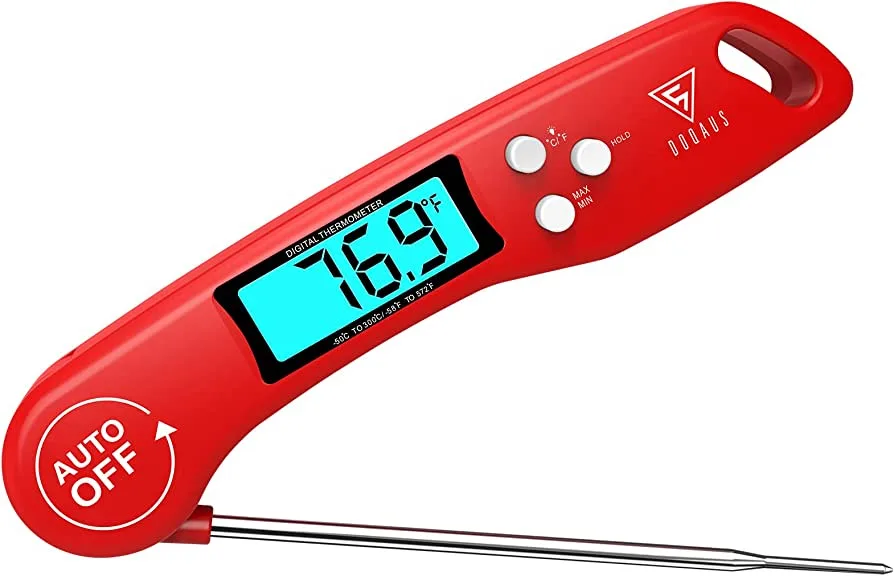
Not inserting the thermometer correctly
Another common mistake is not inserting the thermometer probe correctly. It’s essential to insert the thermometer probe into the thickest part of the meat, making sure it does not touch the bone. If the thermometer is not inserted correctly, the temperature reading may be inaccurate, leading to over or undercooked ribs.
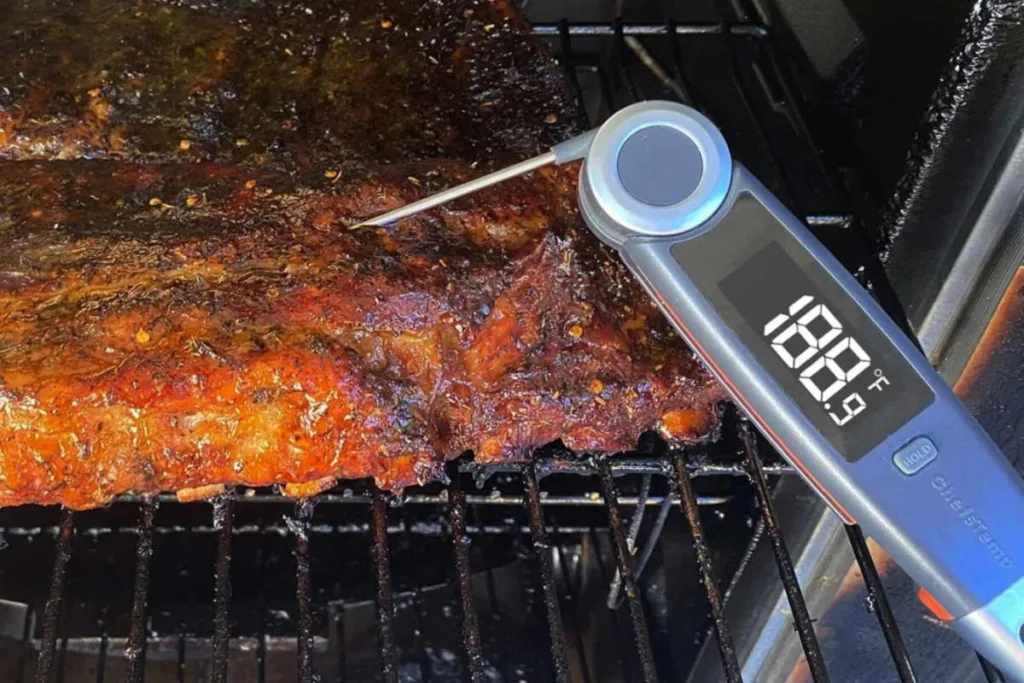
Not allowing the ribs to rest
After cooking the ribs to the desired temperature, it’s essential to let them rest for a few minutes before serving. Resting the meat allows the juices to redistribute, resulting in more tender and flavorful meat. If you cut into the meat too soon, the juices will escape, resulting in dry and tough meat.
Overcooking the ribs
Overcooking the ribs is a common mistake that can result in dry, tough meat. Cooking ribs to a temperature above 195°F (91°C) can cause the meat to become dry and tough. It’s important to follow the temperature chart and remove the ribs from the heat source once they reach the desired internal temperature.
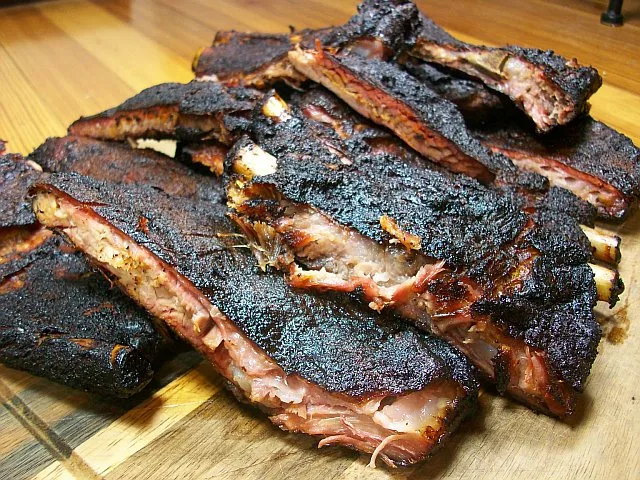
By avoiding these common mistakes, you can ensure that your pork ribs turn out perfectly cooked and delicious every time. Follow the temperature chart and use a meat thermometer to achieve the ideal balance of tenderness and flavor that will impress your friends and family at your next barbecue.
Using a pork ribs temperature chart is an excellent way to ensure that your ribs are cooked to perfection. However, it’s essential to avoid these common mistakes to achieve the best results. By using a meat thermometer, inserting it correctly, allowing the meat to rest, and not overcooking the ribs, you can create succulent and delicious pork ribs that your guests will love.
Conclusion
In conclusion, cooking pork ribs to perfection can be a challenge, but with the use of a pork ribs temperature chart, it’s easier than ever. This comprehensive guide provides you with all the information you need to cook your ribs to your desired level of doneness, from the minimum safe temperature to the falling-off-the-bone stage. By using a meat thermometer and following the temperature chart, you can avoid common mistakes such as overcooking or not resting the meat, and impress your friends and family with perfectly cooked and delicious pork ribs. So, get ready to enjoy some mouth-watering ribs that will leave everyone asking for your secret recipe!
